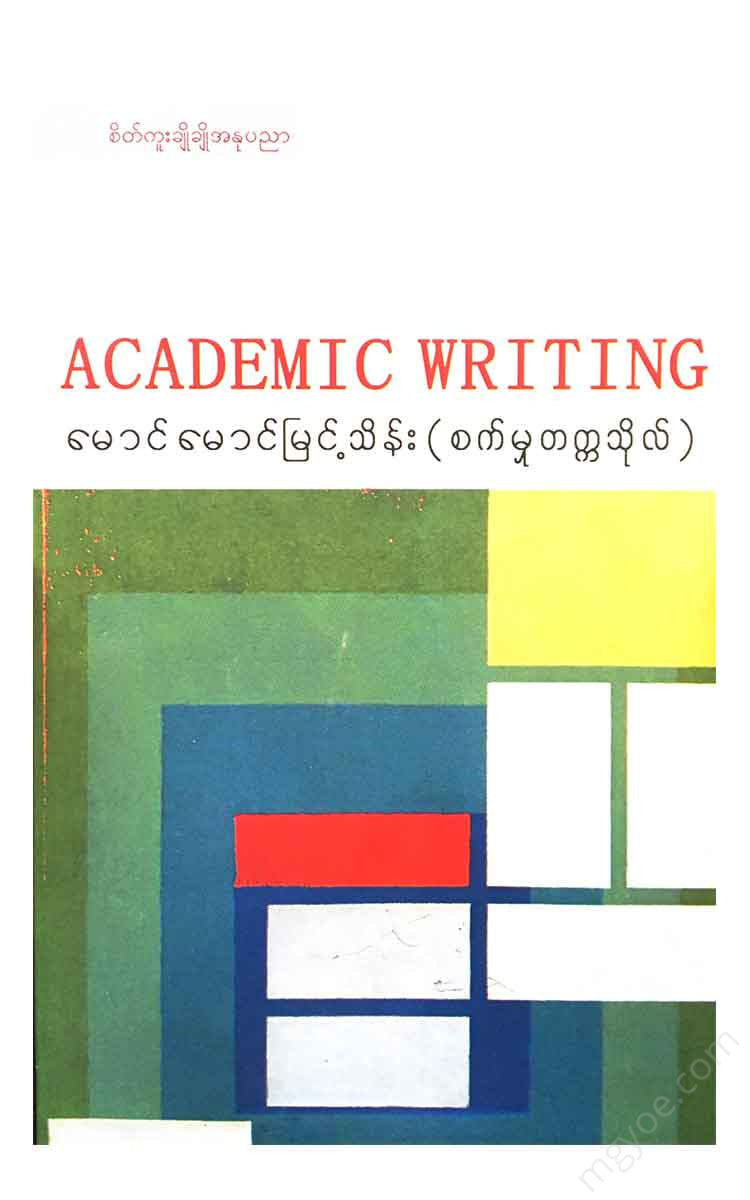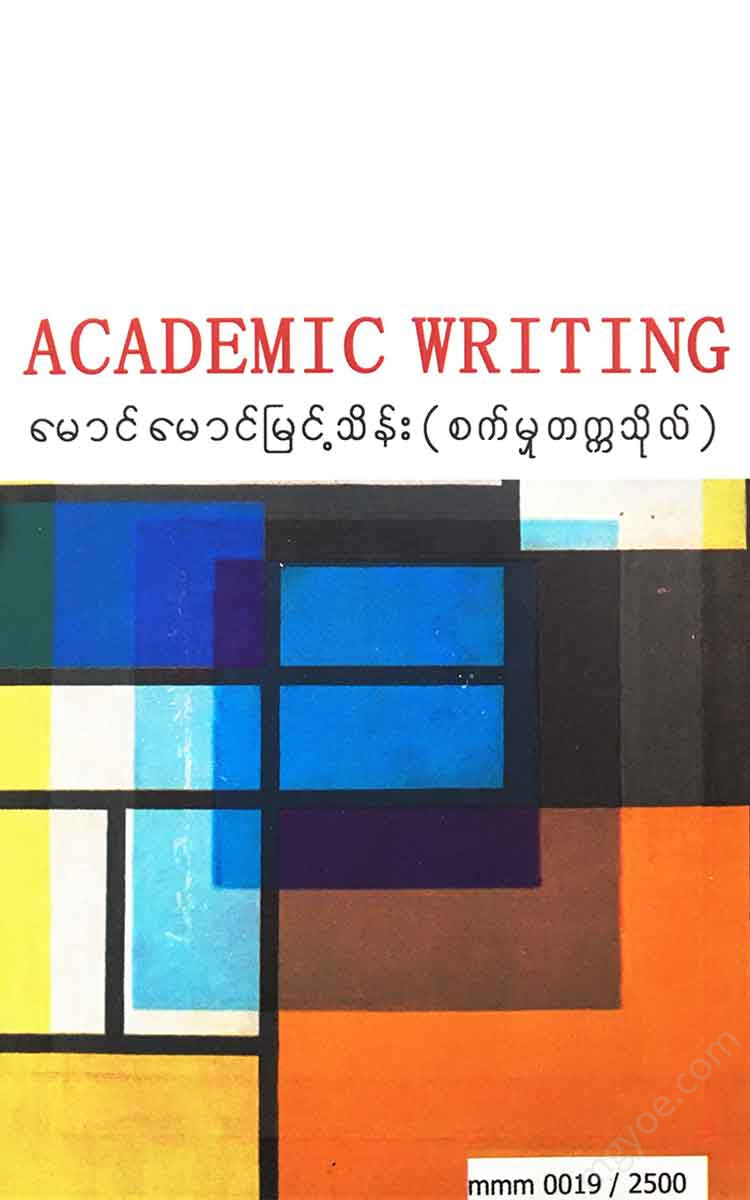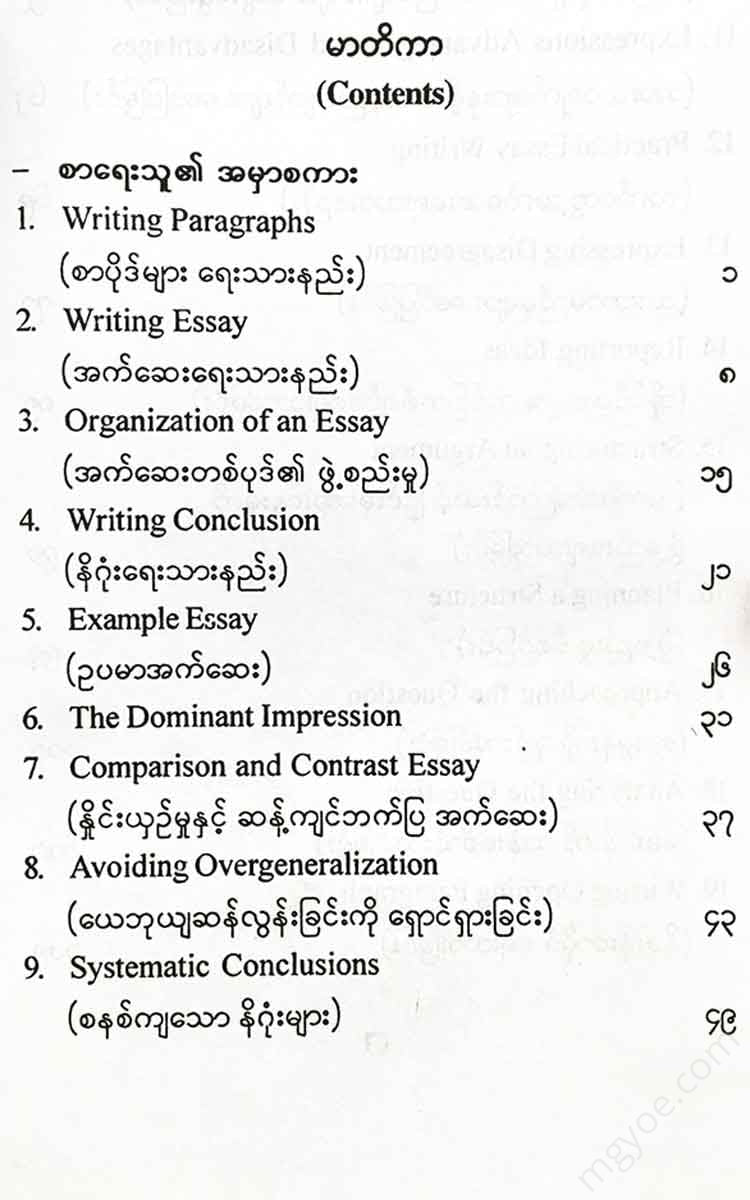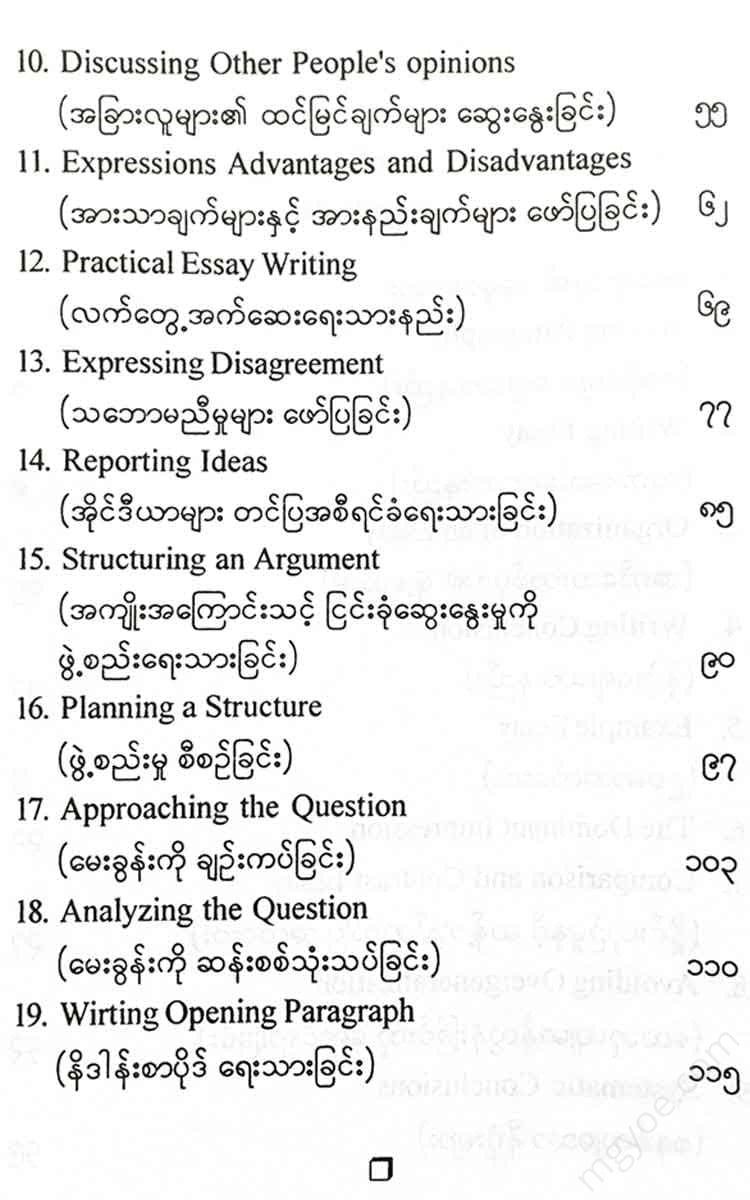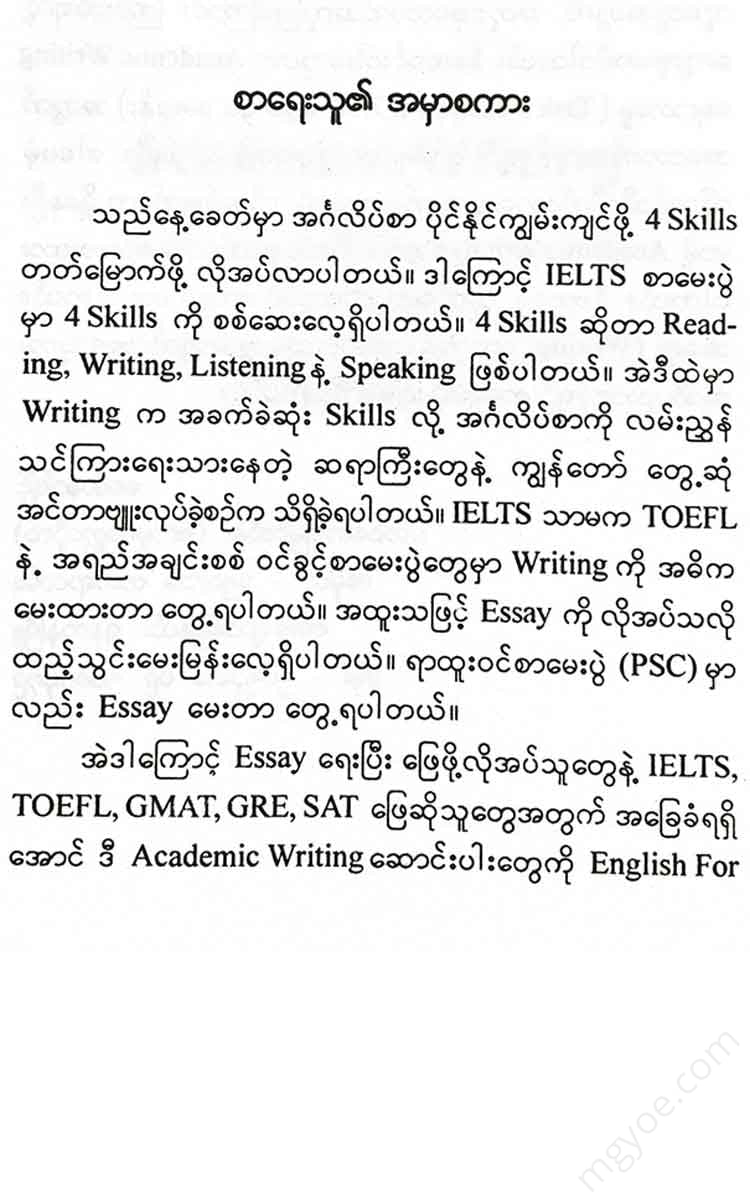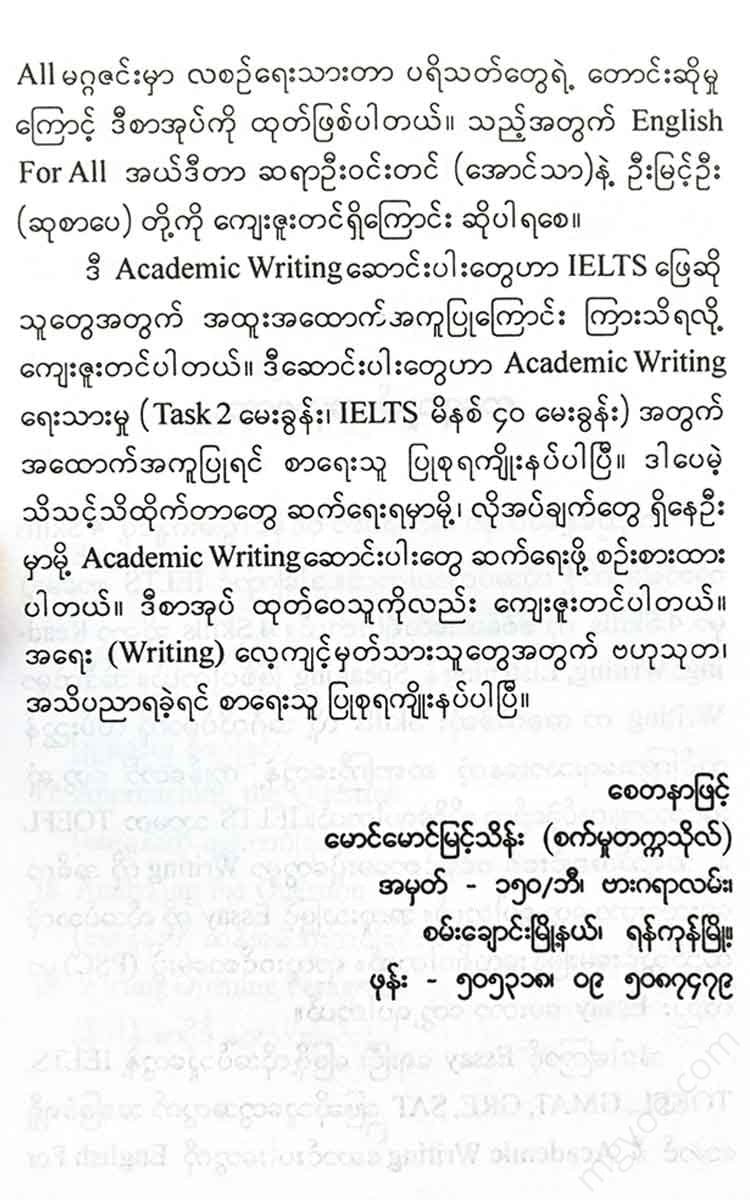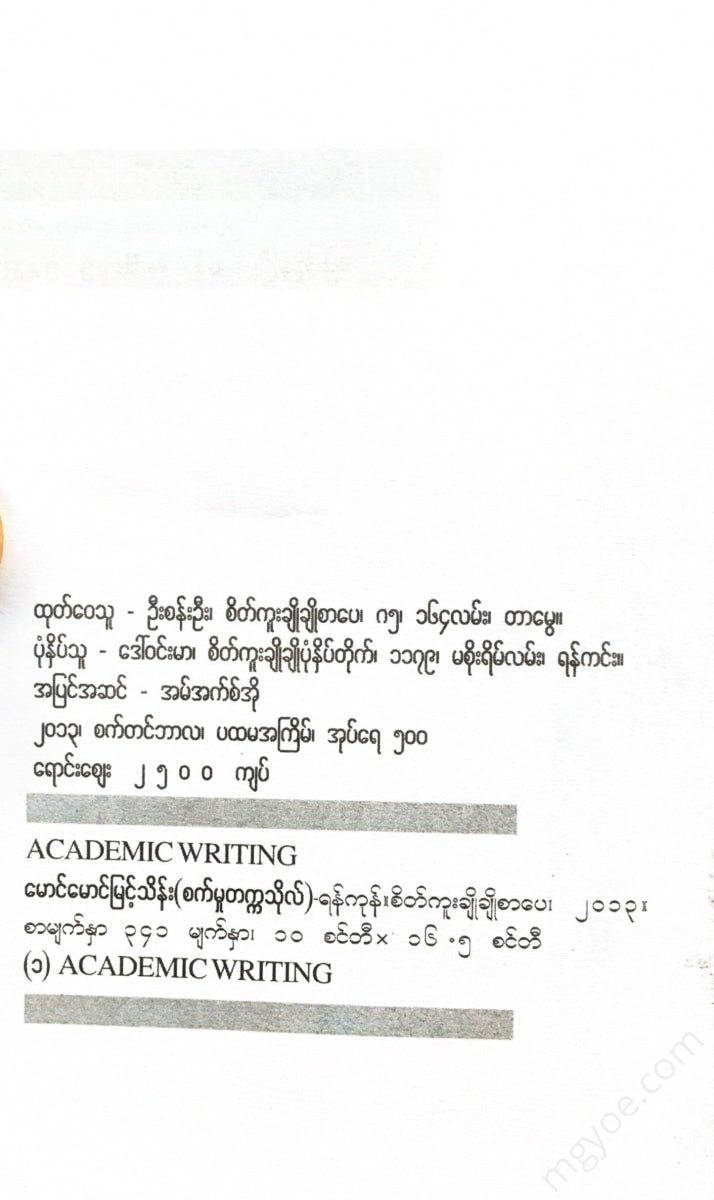စိတ်ကူးချိုချိုစာပေ
Maung Maung Myint Thein (University of Technology) - Academic Writing
Maung Maung Myint Thein (University of Technology) - Academic Writing
Couldn't load pickup availability
Writing Paragraphs
How to write paragraphs
This article is written with the intention of teaching students who are going to study abroad, those who will study at international colleges and universities, and those who are selected for scholarships and will receive diplomas, masters, and Ph.D. degrees, to write academic writing in a systematic and correct manner.
For students taking the TOEFL, GMAT, SAT, GRE & IELTS, it is important to systematically study Academic Writing in order to be able to answer relevant questions in addition to the Test of Written English (TWE).
Essays are usually between 250 and 300 words long and you have 30 minutes to complete them. Therefore, the most common essays asked are as follows.
(A) Express and support an opinion
Writing to express and support an opinion
(B) Choose and defend a point of view
Writing a selective defense of a point of view
(C) Compare and contrast a topic
Writing about comparing and contrasting a topic
(D) Present an argument
Presenting an argument
(E) Persuade an audience
Exhorting an audience
There is no single answer to essay questions. It can vary from person to person. The score is determined by the presentation and the idea behind it. The main thing is how the respondent organizes their ideas and writes them down.
Writing Paragraphs
Actually, an essay is made up of paragraphs. You should study the paragraph and structure first. Then, if you study the form and structure of the essay , you will be able to answer questions related to Academic Writing.
Organizing
A paragraph is a basic unit of organization for writing a group of sentences that develop one main idea.
A paragraph is a basic unit of writing that is a group of sentences that develop a main idea.
There are three parts to a paragraph.
- A topic sentence
- Supporting sentence (sagoosobsan bolmap:)
- A concluding sentence
The Topic Sentence
The topic sentence is the most important sentence in the paragraph. It is the main idea of the paragraph. The topic sentence controls and limits the ideas that can be discussed in a paragraph.
The topic sentence is the most important sentence in a paragraph. It is the main idea of the paragraph. The topic sentence controls and limits the ideas that can be discussed in a paragraph.
Parts of the topic sentence
The topic sentence has two parts: the topic and the controlling idea. The topic is the subject of the paragraph.
A topic sentence has two parts. One is the subject and the other is the controlling idea. The topic is the subject of the paragraph.
eg(1) The color yellow is the color of mental activity. Yellow is the color of mental activity.
In this sentence, the topic is the color yellow .
Controlling ideas are mental activities .
eg (2) Brown is the color of material security.
Brown is the color of material security.
Brown = Topics
material security = Controlling idea
eg (3) Brown shows a desire for stability.
Brown shows a desire for stability.
Brown = Topic Controlling idea = a desire of stability
A topic can have more than one controlling idea. You could write one paragraph about the color brown indicating material security and another on the desire for stability.
Academic Writing
There can be more than one controlling idea in a topic. You could write a paragraph each about the color brown, material security &. desire for stability.
eg (4) People give many reasons for owning a car.
The above sentence is a Topic sentence. In this sentence , the Topic is owning a car and the Controlling idea is reasons. So the Supporting ideas in the paragraph should be " reasons for owning a car".
The following phrases can be used in a topic sentence to express a controlling idea .
- the reasons for:
- the causes of (the effects of) the causes and effects of :
- the steps for (the procedure for)
- the advantages of (the disadvantages of)
- The ways to (the methods of) methods :
- the different sections (parts, kinds, types) of
- the characteristics (traits, qualities) of appearance







